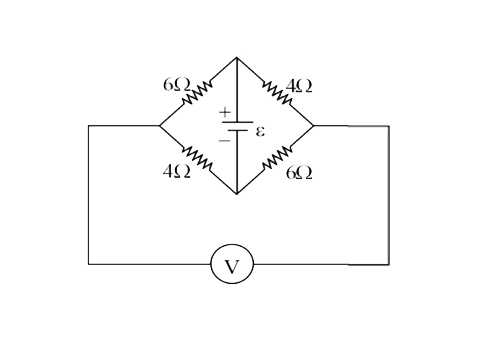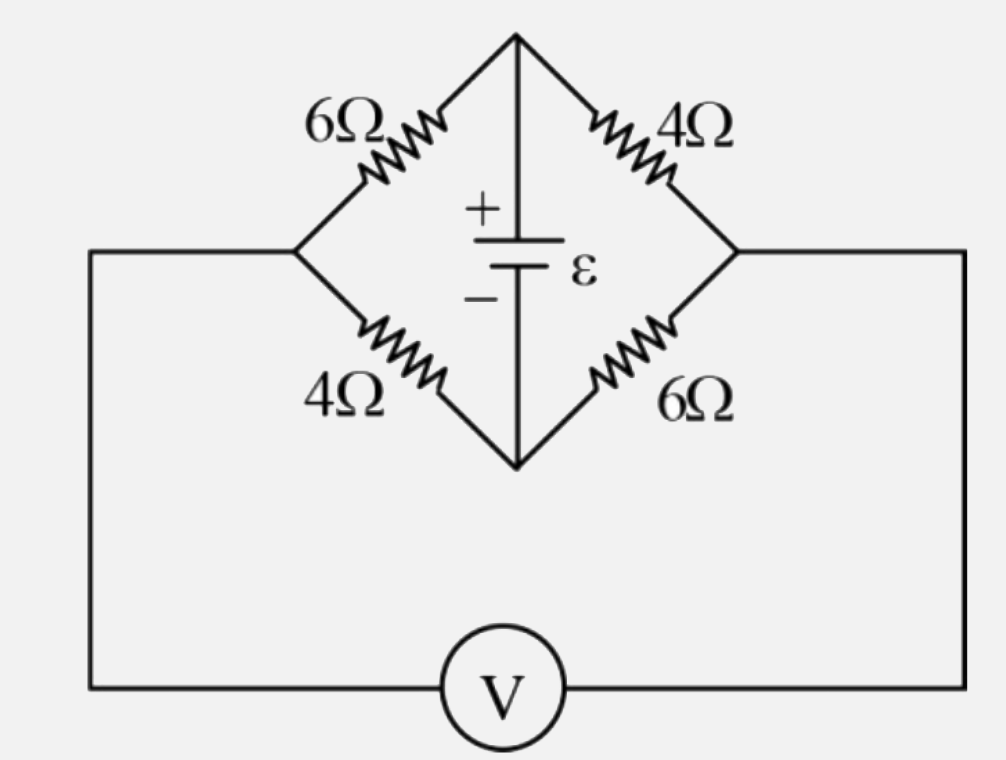E.M.F. of a cell is expressed in
volt
volt per metre
volt metre
none of these
The correct Answer is:A
To determine the unit in which the electromotive force (E.M.F.) of a cell is expressed, we can follow these steps:
1. Understanding E.M.F.:
- E.M.F. stands for electromotive force. It represents the potential difference between the terminals of a cell when no current is flowing.
2. Identifying the Unit of Potential Difference:
- The unit of potential difference (voltage) is a fundamental concept in electricity. The standard unit for measuring potential difference is the Volt (V).
3. Analyzing the Options:
- The question provides several options:
- Volt
- Volt per meter
- Volt meter
- None of these
- We need to identify which of these options correctly represents the unit of E.M.F.
4. Evaluating Each Option:
- Volt: This is the correct unit for measuring potential difference and, hence, E.M.F.
- Volt per meter: This is a unit of electric field strength, not E.M.F.
- Volt meter: This refers to an instrument used to measure voltage, not a unit of E.M.F.
- None of these: This option is incorrect since we have already identified that E.M.F. is expressed in Volts.
5. Conclusion:
- Based on the analysis, the E.M.F. of a cell is expressed in Volts.
Final Answer:
The E.M.F. of a cell is expressed in Volts.
---
- E.M.F. stands for electromotive force. It represents the potential difference between the terminals of a cell when no current is flowing.
- The unit of potential difference (voltage) is a fundamental concept in electricity. The standard unit for measuring potential difference is the Volt (V).
- The question provides several options:
- Volt
- Volt per meter
- Volt meter
- None of these
- We need to identify which of these options correctly represents the unit of E.M.F.
- Volt: This is the correct unit for measuring potential difference and, hence, E.M.F.
- Volt per meter: This is a unit of electric field strength, not E.M.F.
- Volt meter: This refers to an instrument used to measure voltage, not a unit of E.M.F.
- None of these: This option is incorrect since we have already identified that E.M.F. is expressed in Volts.
- Based on the analysis, the E.M.F. of a cell is expressed in Volts.
The E.M.F. of a cell is expressed in Volts.
Topper's Solved these Questions
- BOOK - MCGROW HILL PUBLICATIONCHAPTER - MISCELLANEOUS QUESTIONSEXERCISE - PART-B99videos
MISCELLANEOUS QUESTIONS
- BOOK - MCGROW HILL PUBLICATIONCHAPTER - MEASUREMENTEXERCISE - ELEMENTARY QUESTIONS (HIGHER ORDER THINKING QUESTIONS)13videos
MEASUREMENT
- BOOK - MCGROW HILL PUBLICATIONCHAPTER - MOTIONEXERCISE - HIGHER ORDER THINKING QUESTIONS48videos
MOTION
Similar Questions
Knowledge Check
- Question 1 - Select One
E.m.f. of a cell is measured in
AJBJC−1CNkg−1DWm−2 - Question 2 - Select One
In the circuit shown below, the voltmeter is of large resistance. The E.M.F. of the cell is ε. The reading of the voltmeter is
 AzeroBε10Cε5Dε2
AzeroBε10Cε5Dε2 - Question 3 - Select One
The e.m.f. of a cell is independent of
Aquantity of electrolyteBdistance between the electrodesCarea of the electrodesDall of these
If an external opposing E.M.F. is slightly greater than E.M.F. of Daniel cell the reaction will
View SolutionThe e.m.f. of a cell depends on
View SolutionThe e.m.f. of a cell is E volts and internal resistance is r ohm. The resistance in exteral circuit is also r ohm. The p.d across the cell will be
View SolutionOut of internal energy (I), boiling point (II), pH (III) and E.M.F. of the cell (IV) intensive properties are :
View SolutionThe e.m.f. of a cell is always
View Solution


